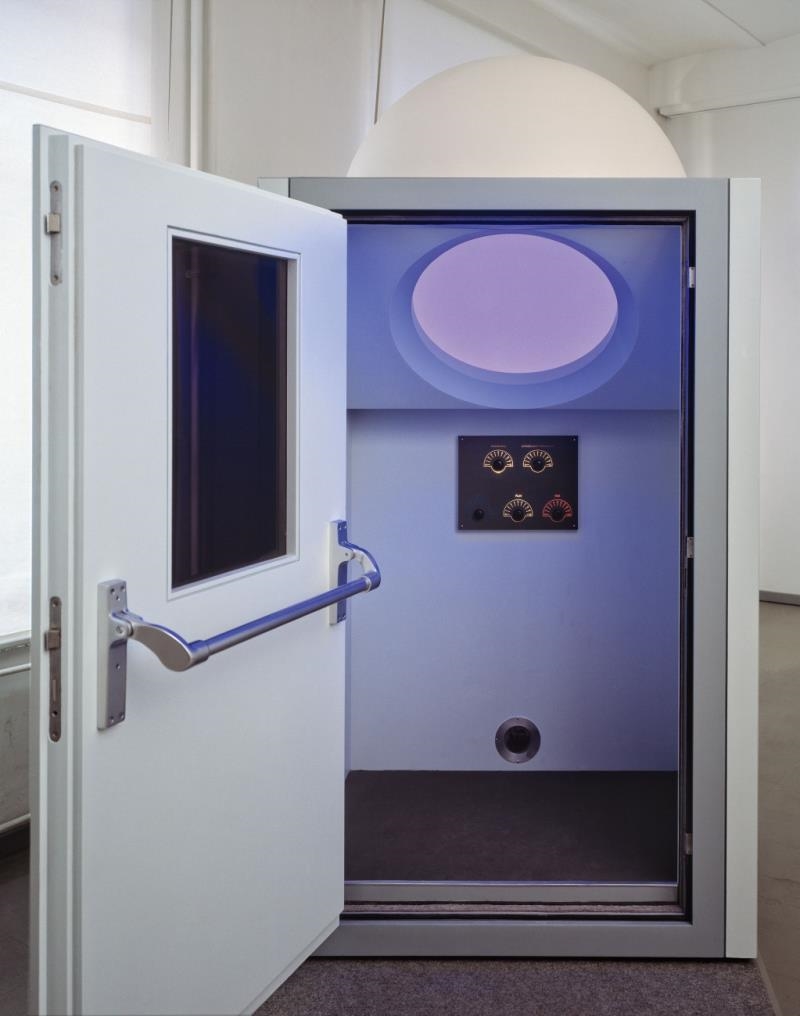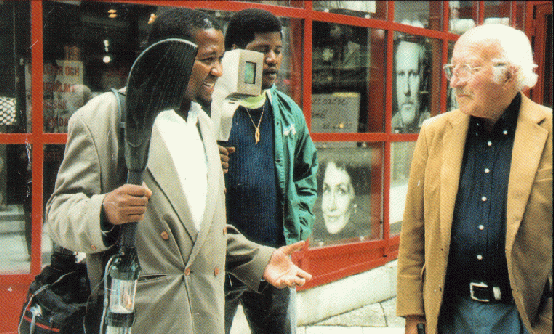DIFFICULT FORMS:
CRITICAL PRACTICES OF DESIGN AND RESEARCH by Ramia Mazé and Johan Redström, IASDR 2007
p1.
1. Rather than prescribing a practice on the basis of theoretical considerations, these critical practices seem to build an intellectual basis for design on the basis of
its own modes of operation, a kind of theoretical development that happens through, and from
within, design practice and not by means of external descriptions or analyses of its practices and products.
p 2.
2. This prompts John Thackara to argue, “Because product design is thoroughly integrated in capitalist production, it is bereft of an independent critical tradition on which to base an alternative” (Thackara, 1988: 21).
3. As Anthony Dunne and Fiona Raby argue, “At its worst, product design simply reinforces global capitalist values. It helps to create and maintain desire for new
products, ensures obsolescence, encourages dissatisfaction with what we have and merely translates brand values into objects. Design… needs to establish an intellectual stance of its own, or the design profession is destined to loose all intellectual credibility and be viewed simply as an agent of capitalism” (Dunne and Raby,
2001: 59)
p. 3
4. This involved rethinking how to relate both to ‘operative criticism’, posed from inevitably biased positions within practice, and to ‘critical theories’, introduced from without (Hays, 1999).
5. By the 1990s, positions with respect to ‘critical architecture’ had polarized into two camps – one concerned with culture and the other preoccupied by form (Hays, 1984).
p. 4
6...post-critical proponents explore notions such as
performativity, procedures, and
pragmatics (Allen, 2000; Baird, 2004/5). In such perspectives, theory and criticality are repositioned in relation to a
constructive and
projective attitude, capable both of
ideological and operational engagement.
7. Practice is explicitly put forward as an approach to – through
materials, form,
and construction – framing questions and alternatives to the status quo with clients and the public.
8. The critique posed by anti-design is not of design or planning as such, but of design in instilling and enforcing ideology. That is to say, design ‘in service’ to any imposed ideology, whether political, technological, or cultural, determined in advance and from outside. ...
While engaging theoretically and politically, the activity of designing and
design objects in themselves were seen to offer possibilities for ‘active critical participation’ in larger ideological systems (Lang and Menking, 2003). The ‘products’ of
anti-design were not, however, intended as finished or closed forms. While object-oriented, form was often applied provisionally, to open up for ideas, debate, and appropriation – as alternative forms not only of product but ideological consumption.
p. 5
9. Conceptual design draws on art to orient a subversion of design norms. With respect to conceptual art, focus is shifted from the producer and the thing to the concept, and making as setting up such a concept through material objects, scripted or improvised interventions, installations or other means.
Epitomizing such an approach since the 1990s,
Droog design countered both Pop and analytic design, tendencies pervading the European design scene at the time.
10.
A more specific version of conceptual design is critical design, most associated in product and interaction design with Dunne & Raby.
They posit the designer as a critically and materially engaged practitioner – a sort of ‘
applied conceptual artist’.
In addition to art, they state: “Critical design is related to haute couture, concept cars, design propaganda, and visions of the future, but its purpose is not to present the dreams of industry, attract new business, anticipate new trends or test the market.
Its purpose is to stimulate
discussion and debate amongst designers, industry and the public about the aesthetic quality of our electronically mediated existence”
(Dunne and Raby, 2001: 58).
Early works challenged mainstream design tenents (Dunne, 1998). Dunne’s
post-optimal’ object, for example, critiques product semantics and the human factors preoccupation with the ergonomic and psychological ‘
fit’.
Instead, strategies of
defamiliarization and
estrangement from modernist aesthetics, are applied as ‘
user-unfriendliness’ and ‘
para-functionality’ to discourage unthinking ideological assimilation and promote skepticism by increasing the
poetic distance between people products.
p. 7
11. Not only for improving design as ‘
problem-solving’, but in creating a
space for designers to reflect upon the ideas, theories, logics, and implications of design in and through practice. That is to say, the intervention of an intellectual basis for ‘
problem-finding’.
12. Conceptual and critical design might be said to represent a shift in attention away from the spatial object in and of itself to the ideas behind form and emergent in formation.
Explicitly dealing with the materialization of concepts, such concepts become not only
external or retrospective descriptions of design objects, but an integral part of the design objects as such.
In this way, the concepts and theories embodied in an artifact might be differentiated from tacit or propositional knowledge (see, for example, Frayling, 1993/4).
This opens up for a design practice that is not only an
operational, but also an
intellectual basis, for design research.
p. 8
13. Indeed, certain conceptual frameworks within critical practice such as ‘
object as discourse’ and ‘
design as research’ provide an essential basis for thinking about how to combine
intellectual and operational modalities for contesting and further developing design from within.
p. 9
14. n critical practice, the designed object might be understood as a sort of materialized form of discourse. In Dunne's case, “the electronic objects produced in the studio section of his doctorate are still 'design,' but in the sense of a 'material thesis' in which the object itself becomes a physical critique... research is interpreted as 'conceptual modeling' involving a critique of existing approaches to production/consumption communicated through highly considered artifacts” (Seago and Dunne, 1999: 16-17).
15. In questioning design as merely ‘in service’ to ideas and problems posed in advance and outside of design, design itself is understood to be inherently
ideological.
16.
Difficult forms might force a
hermeneutic reading of the formal operations of its (de)construction – the architect quite literally situated as author, the inhabitant as reader. ...
As any range of postmodern and post-critical revisions suggest, architecture is not writing, nor are spatial practices discursive (Allen, 2000; Hatton, 2004).
p. 10
17. Schön describes a complex interplay of generative and propositional modalities in ongoing and situated practice, proposing that “When someone reflects-in-action, he becomes a researcher in the practice context”(Schön, 1983: 68).
Rather than objective knowledge or abstract theory, conceived of as above or in advance of practice, such perspectives give primacy to subjective interpretation and practical experience.
18. .
Jane Rendell considers ‘reflection in action’ in architectural research,...
She argues for design and research that
do not just solve or analyze problems but may
critically rethink the parameters of a problem, theory or institution.
Indeed,
making in itself – particularly making experimental forms and conceptual artifacts – acts as a
critique of the paradigms of knowledge held in the architectural profession and building industry.
p. 11
19. In such terms, neither design nor research may be about
solving problems or
reducing uncertainty, but opening up
complexity and criticality.
20. As architect Stan Allen argues, “There is no theory, there is no practice. There are only practices, which consist in action and agencies. Practices unfold in time, and their repetitions are never identical” .
p. 12
21. A focus on temporal form and use as participation – central to interaction design (Redström 2001, Mazé and Redström, 2005; Mazé forthcoming 2007) – opens up new questions, such as how a
critical design relates to reflective use, and, vice versa, how might ‘
active critical participation’ somehow determine design.
We must ask how
thinking and making in interaction design – as ‘
problem-finding’ rather than ‘
problem-solving’ – might enquire into ongoing relations between
critical design and
critical use.
p. 13.
22. Elsewhere, we discussed the use of design research programs as “
provisional knowledge regimes” (Binder and Redström, 2006), as a structuring of experimentation, and its theoretical orientations, in ways that are not absolute.
23. As the program unfolds through collaborative and multi-disciplinary work over time, the
meaning – or consequences – of this proposed view on the world evolve and
materialize through design experiments.
24. n this way, the notion of the program might address the need for foundations that can be built upon or criticized, affirmed, or opposed in a critical design practice in a way that is still open for, and sensitive to,
heterogeneity(異質性) and multiplicity.
Practice:
1. Survey
STATIC! &
Slow Technology
2. Select a project from these two programs, write a short critique (200 words) based on "difficult forms" framework.

